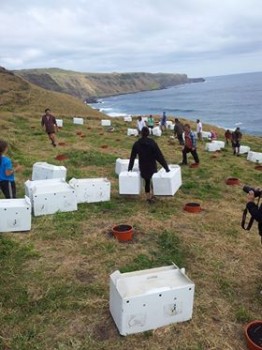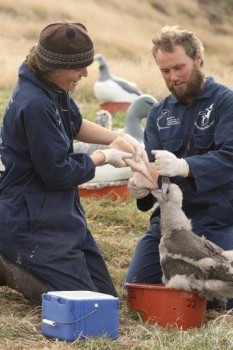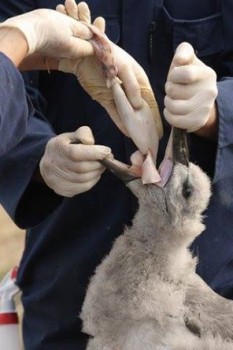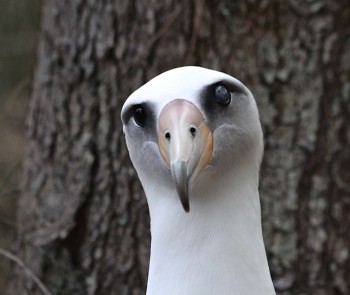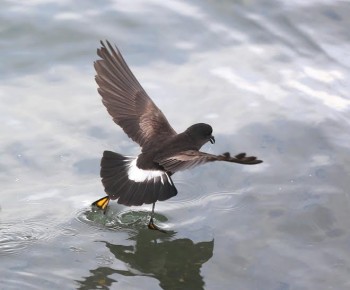Bungo Nishizawa (Graduate School of Fisheries Sciences, Hokkaido University, Japan) and colleagues write in the journal Marine Biology on the at-sea distributions of Black-footed Phoebastria nigripes and Laysan P. immutabilis Albatrosses deduced from ship-based surveys in the North Pacific Transition Zone during the non-breeding season.
The paper’s abstract follows:
“The North Pacific Transition Zone (NPTZ) is one of the most productive offshore regions. To identify important habitats for pelagic top predators within this region, we investigated the at-sea distributions of black-footed (Phoebastria nigripes) and Laysan albatrosses (P. immutabilis) by vessel-based surveys during their non-breeding season (July and October in 2010 and September and October in 2011). We developed statistical models using satellite-based oceanographic data at spatial scales of 4, 20 and 80 km to explain their densities. For both species, sea surface temperatures (SST) and distance to the Emperor Seamounts emerged as important factors in the better-fitting models at all spatial scales. In addition, black-footed albatrosses were widely distributed in the NPTZ (SST17.7–27.4 °C), whereas Laysan albatrosses favoured northern and colder waters (13.6–25.4 °C). Our results also indicated that the Emperor Seamounts, where trawling and longline fishing occur, were an important habitat for both species in the NPTZ. Therefore, careful attention should be paid to interactions between fisheries and albatross species in this region”

Black-footed and Laysan Albatrosses, photograph by the Kure Atoll Conservancy
Reference:
Nishizawa, B., Ochi, D., Minami, H., Yokawa, K., Saitoh, S.-I. & Watanuki, Y. 2015. Habitats of two albatross species during the non-breeding season in the North Pacific Transition Zone. Marine Biology 162: 743-752.
John Cooper, ACAP Information Officer, 22 March 2015

 English
English  Français
Français  Español
Español 
